Atlantic Monthly Contributors's Blog, page 394
July 10, 2015
A 7-Day Workweek Could Soon Be Legal in Wisconsin
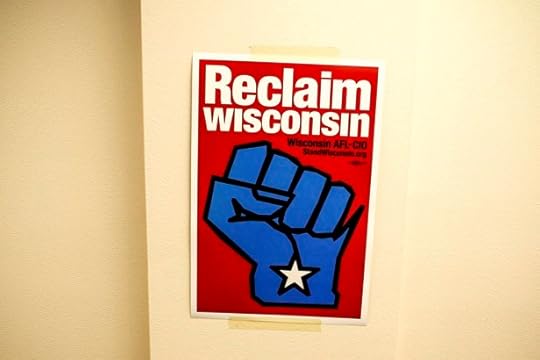
This week, presidential candidate Jeb Bush was harshly criticized for saying that the solution to some of America’s economic woes could be solved if Americans worked more hours. Republican politicians in Wisconsin are trying to make this theory reality, with a proposal to allow seven-day workweeks.
Wisconsin’s GOP is trying to nix an existing law that requires employers in the manufacturing and retail sectors to give employees at least 24 hours off during each consecutive seven-day period. Currently, for an employee to skip his or her weekly day off, an employer has to get approval from the state’s Department of Workforce Development. The Wisconsin Manufacturers and Commerce association—a staunch advocate of the bill—suggests that the step is onerous and unnecessary, since the department has approved 733 such requests over the past five years, a number they imply means that the department is rubber-stamping the requests. Supporters also suggest that the plan ultimately helps employees who want to work more hours.
But there are many who are skeptical. “I think it's been portrayed as an effort to try to help workers; it's clearly designed to benefit employers,” says Donald F. Kettl a professor of public policy at the University of Maryland and the former director of the Robert M. La Follette School of Public Affairs at the University of Wisconsin. “Many people like extra hours, but the idea of being in a position where you're asked to work seven days [raises the question] of how much of a choice it really is.” In response, advocates of the bill suggest that coercion won’t be an issue, and if it is, employees can report business owners.
But evidence of troubling labor practices that force workers into more hours, or include intimidation or fear of losing one’s job if you turn down hours, or shifts, or complain has repeatedly cropped up in recent years, especially as more employers shift their schedule-making practices and many Americans remain desperate to hold onto any employment at all. Employees, labor supporters, and unions have railed against the increased use of on-demand labor—which often means that employees trek in to work only to be told to go home since there aren’t enough customers. Workers may also receive last-minute calls directing them to come in quickly or stay home from a planned shift. The short notice about changes can mean fluctuating hours, scrambling to find childcare, and turning down shifts even when you want to work. It also means volatile weekly and monthly income, and fear of employer retribution for not adhering to tenuous schedules. In theory, fear of retribution or feelings of intimidation when it comes to work schedules shouldn’t be happening. And ideally, if employees feel that they are being treated unfairly, they can turn to legal channels for help—but doing so on your own can be a terrifying and long process, and losing a job can leave many workers unable to make ends meet. That’s where outside assistance can play a role. Earlier this year workers in unionized Macy’s stores got their employer to agree to give them more notice about their schedules. And the United Food and Commercial Workers union helped push Walmart to implement better scheduling practices as well.
But workers in Wisconsin don’t necessarily have access to similar support, at least not anymore. Under the tenure of Governor Scott Walker, organized labor’s power has been severely depleted within the state, a radical change from the days when the state had a strong union presence. Though Walker might not have a direct hand in the current seven-day workweek proposal, his changes have certainly helped set the stage for decreased opposition to such a bill. “[Republicans] think they have the unions on the run and they want to try to do as much as they can to weaken them,” Kettl says. He adds that the alliances between Democrats and unions, and Republicans and businesses is clear and strong in Wisconsin—stronger than it is in many other states. “Every effort that is made to weaken unions is simultaneously an effort that's being made to wound the Democrats.” The push for a seven-day workweek from the Republican party is indicative of the ongoing struggle between the two parties and their allies.
According to Kettl, “There are big and deep ideological battles where the conservative wing of the Republican party is resurgent in Wisconsin and they see this as an incredible opportunity to try as best they can to push Wisconsin from blue to purple to red.”








Keep Body Cameras Off Public-School Educators

Throughout the United States, police officers are beginning to wear body cameras. Should principals in America’s public-school systems follow their example?
The stakes are high.
Americans who spend their childhoods in schools where all interactions are recorded for review are likely to regard constant surveillance outside the home as normal.
Alas, the country may be seeing the beginning of that trend.
A school district in southeastern Iowa “is thought to be among the first in the nation to outfit administrators at each of the district's eight school buildings with a body camera,” the Des Moines Register reports. “The district spent about $1,100 to purchase 13 cameras at about $85 each. They record with a date and time stamp, can be clipped onto ties or lanyards, and can be turned on and off as needed.”
For now, they won’t be used to record all interactions with adults––only school administrators will use them, and probably not all the time. But once in place, there could be a temptation to record everything just in case something happens. The Superintendent Pat Coen told the newspaper that he saw the value in wearable recording devices while deployed in Afghanistan with the Iowa Army National Guard, while another administrator in the school district first urged use of the technology:
Principal Mark Yeoman of Aldo Leopold Middle School said he was wrongly accused of kicking a student. A parent had complained about the Burlington school leader's behavior after he used de-escalation strategies to try to calm down a student. The incident was caught on a school camera, which Yeoman said he reviewed and later showed to the parent.
"They didn't have to take my word over the child's word. They were able to see it," Yeomen said.
After talking with the school's resource officer about how patrol car cameras—and now, body cameras—can help protect officers and cut down on the number of complaints, Yeoman approached Coen about making a purchase.
Note that stark contrast: For U.S. soldiers who are in Afghanistan, as well as American police officers, body cameras guard against misconduct or errors that regularly have deadly consequences. The stakes of improving outcomes could not be higher and the case that the benefits of body cameras outweigh the costs is easily made.
Yet here, a veteran of Afghanistan and a school police officer recommended body cameras when the stakes involve ... a principal wrongly accused of kicking a student. If that’s the country’s new threshold for the benefits of intrusive surveillance outweighing the costs it may as well dispense with half-measures and adopt 1984-level scrutiny.
The commenter David J. Gudenkauf has a different view.
"I think this is an excellent idea for education systems," he writes. "It will show the problems of classroom activities outside of the classroom for many to evaluate, including parents and the community. It is time that this internal discussion be shown externally and with transparency ... the goal of education is to teach children with the whole community assisting not just throwing money at the problem."
Says Mark Challis, another commenter at the Des Moines Register who favors broader surveillance: "Cameras should be running in all classrooms. Then when Mommy and Daddy claim little Johnny or Susie isn't misbehaving, the tapes can roll. Parents not backing teachers is a large part of the discipline problems at schools."
These responses illustrate the seductive power of mass surveillance: Before it is adopted, many succumb to the illusion that transparency can solve previously intractable problems. That belief is seldom vindicated. It may be that a school with an unusually severe bullying problem, for example, or rival gangs that are routinely having violent conflicts in the halls might benefit, overall, from transparency. (Though technology in the hands of incompetent administrators is likely to be used incompetently.)
It seems that most American schools, however, lack the levels of danger and crime that would justify relying on body cameras. And the effect of transparency in their hallways and classrooms could more likely divide than unite the communities they serve. Helicopter parents would perhaps constantly second-guess every perceived slight to their children. Administrators and teachers could cease behaving like normal humans and alter their behavior to minimize their chance of being criticized. Students could even cease having normal relationships with teachers and administrators. Maybe adolescents would find humiliations and trivial misbehavior recorded.
In all sorts of ways, the costs of surveillance would probably outweigh the benefits. And that’s why the seemingly inexorable creep of this technology should be resisted—not accepted.









Minions: An Amiable Origin Story in Need of a Worthwhile Villain
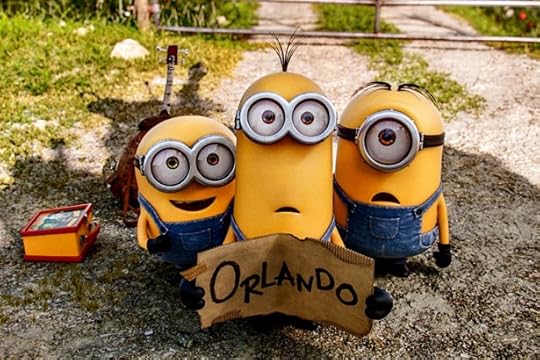
Minions, the spinoff/prequel of Universal Pictures’ Despicable Me movies, begins, fittingly enough, at the very beginning: In a protean sea, single-celled creatures compete and evolve, predators and prey growing in tandem. But who’s that there, dangling off the tail fin of a particularly wicked-looking fish? Why it’s a minion, one of those little lemon Tic Tacs of servility who worked for the supervillain Gru in the prior films. A narrator (Geoffrey Rush) explains that while not all minions are created alike—some have one eye, some two; some are taller, some rounder—“they all share the same goal: to serve the most despicable master they can find.”
Cue history. The minions graduate from fish groupies to dinosaur groupies, before taking an inevitable step backward with the arrival of human beings. Caveman, pharaoh, vampire, Napoleon—all are tried on for size as masters, but none quite fit. So the minions retreat to an arctic cavern, where they build their own society in seclusion.
But something is still missing. The minions are like rogue planets lost in space, bereft of a star to orbit. So three members of the colony—Kevin, Stuart, and Bob—set out to find a suitably despicable master. (All of the minions are voiced, as before, by director Pierre Coffin, in their distinctive pidgin mishmash of English, Spanish, French, Italian, and sheer gibberish.)
Related Story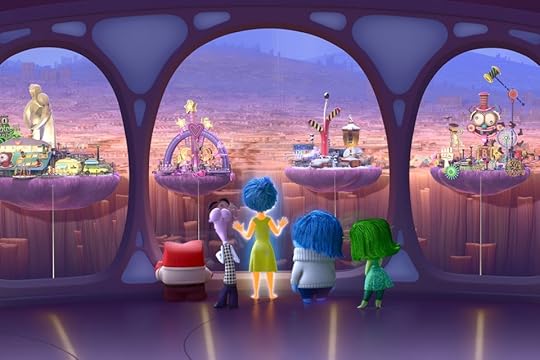
With Inside Out, Pixar Returns to Form
The year is by now 1968, which means that the Minions soundtrack will make amiable (if not terribly imaginative) use of the Rolling Stones, The Who, the Doors, the Beatles, The Spencer Davis Group, and the theme song from Hair. The minions first arrive in New York, but while flipping channels on a department-store TV—The Saint, Bewitched, The Dating Game—they stumble across a secret channel announcing the upcoming Villain-Con convention to be held in Orlando. (In one of the movie’s better gags, 1968 Orlando is portrayed as essentially an empty swamp.) At Villain-Con, the minions meet and sign on with the world’s self-described greatest supervillain, Scarlet Overkill (Sandra Bullock), who whisks them off to London, where the central plot will unfold. Because, you know: groovy, baby.
There, Scarlet and her doting husband, Herb Overkill (Jon Hamm), charge the minions with stealing Saint Edward’s Crown from Queen Elizabeth II (Jennifer Saunders). As an additional incentive, Scarlet makes clear that if they fail, she will be slicing herself some filet minion. Hijinks ensue, as Kevin, Stuart, and Bob bounce from the Tower of London to the site of Excalibur to Westminster Abbey. Double-crosses (some inadvertent) are perpetrated on all sides, and chase scene follows closely upon chase scene.
There’s plenty of high-velocity comic inanity on display to keep kids happily diverted, and the minions themselves are consistently amusing. (Though, unsurprisingly, they demonstrate that they’re better suited to be comic grace notes than full-on protagonists.) The movie’s major problem is an extension of its own premise: Search as they may, the minions never find a villain worthy of their subservience. Scarlet Overkill is a slapdash figure who never coheres as a character, and Bullock isn’t a gifted enough comedienne to elevate the material she’s been given. (Kristen Wiig was far better in a less-central role in Despicable Me 2.) And casting Hamm as Scarlet’s debonair, man-of-the-sixties husband is a one-note gag that never finds its proper key.
This discrepancy between Minions and the Despicable Me movies is made all too clear at the very end, when the film comes full circle and a new villain briefly appears on the scene, a young boy with a beak-like nose and an accent of indeterminate Eastern European origin. The minions recognize his qualities immediately, and so do we: Finally—but alas, too late for this installment—a master whose despicability is beyond reproach.









The Moment for Criminal-Justice Reform?

The U.S. locks up more of its citizens than any nation in the world, and far too many of them are African American and Hispanic men imprisoned for non-violent drug crimes. The sad state of the criminal-justice system has become, over the last decade, a crisis lamented with nearly equal measure of sorrow by Democrats and Republicans alike. To hear the politicians tell it, mass incarceration is both a financial drain on the government at all levels, and a moral stain that consigns families and entire communities to a cycle of poverty.
Yet despite no shortage of proposals for reform in recent years, Congress has done virtually nothing. That may, finally, be about to change, as an emboldened President Obama eyes what might be the last major addition to his domestic legacy in the White House.
Speaking at a press conference last week, the president was asked how he might follow the remarkable string of victories he earned in late June, which included a congressional win on trade, a pair of legacy-setting Supreme Court decisions, and a widely-praised eulogy in Charleston. He ticked off several unchecked boxes on his economic agenda, including a major infrastructure bill and enactment of his proposals to boost job training and access to community college. But the big-ticket item Obama mentioned that actually holds the most promise in the Republican Congress is a long-awaited overhaul of the nation’s criminal justice system. “We’ve seen some really interesting leadership from some unlikely Republican legislators very sincerely concerned about making progress there,” the president observed.
He’s right. The bipartisan coalition pushing to reduce incarceration rates in the world’s most crowded prison system has been building for years, bringing together ardent foes like the Koch Brothers and the ACLU, and Rand Paul and Cory Booker, among others. Various proposals to eliminate mandatory minimum sentences for certain drug crimes, and to keep young, nonviolent offenders from receiving long, crippling prison sentences have circulated for a while without going anywhere. Yet that movement is cresting now, providing what lawmakers and advocates say is a genuine opportunity to enact legislation before the end of the year. “I am very optimistic that we will get something done. If you had told me a couple years ago, I would not have believed it,” said Representative Elijah Cummings, a Maryland Democrat who is not known as a congressional Pollyanna.
As usual, however, Cummings’s rosy view comes with a key caveat repeated by other advocates I interviewed: the looming presidential election. “I think the stars have aligned,” Cummings said. “I do believe, however, that if we don’t get it done now, I don’t know that the stars will align like this again.” Obama talked up the prospect of criminal justice reform just a few days after lawmakers in the House unveiled the most ambitious and comprehensive proposal to modernize the system to date. Over the weekend, The New York Times reported that Obama was soon likely to commute the sentences of dozens of nonviolent drug offenders—an act of presidential clemency unprecedented in scope that would seek to galvanize the push for reform in Congress.
“I think the stars have aligned. I do believe, however, that if we don’t get it done now, I don’t know that the stars will align like this again.”What distinguishes criminal justice reform from other bipartisan efforts is the wide range of motivations that have led a diverse coalition of people to draw the same conclusion: There should be a lot fewer people in U.S. prisons. Fiscal hawks, including the anti-tax activist Grover Norquist, frequently cite the exploding costs and inefficiency of the criminal justice system. According to an oft-repeated statistic from the Pew Charitable Trusts, federal spending on prisons rose sevenfold over the last three decades, from less than $1 billion (adjusted for inflation) in 1980 to nearly $7 billion in 2013. That increase was propelled by a corresponding rise in the numbers of inmates and the number of prisons.
Another libertarian complaint is “overcriminalization.” Congress keeps making new laws, which have led to thousands of different rules in the penal code that can be broken—and prosecuted. “There are now so many administrative regulations that carry criminal penalties that nobody knows how many there are,” said Representative Jim Sensenbrenner, a Wisconsin Republican and the co-author of the SAFE Justice Act, a comprehensive proposal introduced in June.
Yet those arguments have faded to the background in recent months as the deaths, at the hands of police, of young black men in Ferguson, Staten Island, and Baltimore—along with the suicide of Kalief Browder in New York—have once again illuminated the inequities that draw a disproportionate number of African American and Hispanic men into the criminal justice system at an early age. The financial cost is significant, acknowledged Senator Mike Lee, the Tea Party conservative who has joined with Democrats to push for a reduction in mandatory minimum sentences. “The even more significant and more compelling component of this is the human cost,” Lee told me, “the number of husbands, fathers, sons, uncles, brothers throughout the country who are locked up for sometimes years and decades at a time.”
Related Story
Do the Koch Brothers Really Care About Criminal-Justice Reform?
And as Obama and others have noted, even a short prison sentence can be catastrophic to a person’s future chance of success. Many employers won’t hire people with a criminal record, and they might even be ineligible for many educational or job training programs, leaving them with few options. “It is not a sentence for a week or a year. It is a sentence for a lifetime,” Cummings said. “There are certain states where you cannot become a barber if you have a criminal record. We are creating a situation where people have nowhere to go but a life of crime.”
The question House and Senate lawmakers are now wrestling with is the scope of legislation. Proposals in the Senate have tended to focus on narrow aspects of criminal justice reform. The Smarter Sentencing Act, introduced by Lee and Senator Dick Durbin of Illinois, the second-ranking Democrat, would reduce mandatory minimum sentencing for nonviolent drug crimes while increasing penalties for drug offenses linked to sexual abuse or terrorism. Another bill from Senators John Cornyn, a Texas Republican, and Sheldon Whitehouse, a Democrat of Rhode Island, would tackle so-called re-entry reform. Based on successful programs in their home states, the proposal would allow inmates to earn time off their sentences by participating in programs, such as prison jobs, designed to reduce recidivism.
In the House, criminal justice reform advocates (including Koch Industries and the ACLU) have rallied around the broader bill authored by Sensenbrenner and Representative Bobby Scott, a Virginia Democrat. The SAFE Justice Act addresses both mandatory minimums and recidivism programs, but it also includes a raft of other changes aimed at beefing up probation programs, preventing wrongful convictions by offering more protections for poor defendants, and making it easier for elderly inmates to secure early release. The bill also addresses what advocates call the “over-federalization” of crime, in which offenses that could be prosecuted in state court are often transferred to federal jurisdiction, where the penalties are stiffer. Sensenbrenner said the proposal emerged out a task force that he and Scott led that held 10 hearings over the last two years and studied many reform efforts that have worked at the state level.
For Virginia Sloan, president of the Constitution Project, the sheer breadth of the proposal is something of a watershed moment in the 20-year effort to roll back tough-on-crime laws that many Republicans and Democrats now concede went too far. “We just have not seen this level of bipartisanship in a long time, if ever,” Sloan told me. “People are now looking back at those bills and saying, ‘It doesn’t matter what party you were from: We made mistakes. We went in the direction of toughness and finality rather than fairness and reliability and getting it right.’”
In Congress, not even consensus is a guarantee of success. After Obama’s reelection in 2012, advocates for comprehensive immigration reform were never more confident that their moment had come, and despite the passage of legislation in the Senate, the effort stalled out in the House. Neither Speaker John Boehner nor Senate Majority Leader Mitch McConnell have said much either way about criminal-justice reform, but the congressional middle men—Judiciary Committee Chairmen Charles Grassley in the Senate or Bob Goodlatte in the House—are more traditional law-and-order Republicans who have been resistant to the issue in the past.
There are indications, however, that at least Grassley may be shifting. In March, he delivered a lengthy speech denouncing efforts to reduce mandatory minimums, mocking supporters for promoting the idea “that poor, innocent, mere drug possessors are crowding our prisons.” In recent days, his office has confirmed reports by Politico and BuzzFeed that he is working with Democrats on legislation that could include changes to mandatory minimum sentences. In the House, Goodlatte has set up a separate, “step-by-step” process for considering the issue over the next several months. That’s ominous news for advocates, since it’s the same process Goodlatte used to effectively slow-walk immigration reform to death in 2013. Sensenbrenner, for example, criticized the chairman’s intention to split up his bill into multiple pieces. “This is a way to make sure all of this fails,” he told me.
If the failure of immigration reform is a cautionary tale for advocates of criminal-justice reform, then the more recent success of legislation reining in the NSA could be a roadmap. The coalition of Democrats and libertarian-minded Republicans is similar, and it is lead in part by Sensenbrenner, a 36-year veteran of the House, it kept gathering support until it became impossible for the resistant party leadership to ignore. That effort took more than a year, however, and with the presidential campaign threatening to interrupt the bipartisan comity that’s broken out on Capitol Hill, there’s a reason President Obama needs lawmakers to move quickly. If he wants to notch one more lasting victory for his domestic legacy, he might only have a few more months to get it done.









July 9, 2015
Hackers Scored Personal Data on Over 21 Million Americans
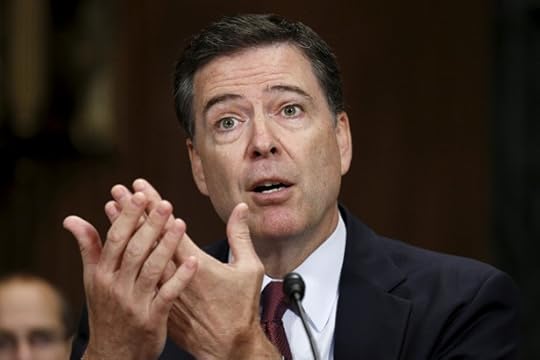
On Wednesday, computer glitches grounded thousands of United flights and suspended securities trading on the New York Stock Exchange, although neither failure is thought to have stemmed from “malicious activity.” Those meltdowns overshadowed Senate testimony about another major tech-related episode that was nefarious—the breach of the Office of Personnel Management (OPM), purportedly by China-linked hackers.
Although the breach was technically last month’s news, each government statement has revealed that it was larger than previously disclosed. First, the breach was said to include the data of four million Americans. Then it grew to 14 million. And then to 18 million. On Thursday, the figure ballooned to over 21 million.
“The team has now concluded with high confidence that sensitive information, including the Social Security Numbers (SSNs) of 21.5 million individuals, was stolen from the background investigation databases,” the OPM announced. “This includes 19.7 million individuals that applied for a background investigation, and 1.8 million non-applicants, predominantly spouses or co-habitants of applicants.”
Among those affected was FBI Director James Comey, who testified on Wednesday about the extent to which the “enormous” digital pilfering of the OPM’s trove of documents, including the sensitive SF-86, affects more than just government employees or contractors:
I’m sure the adversary has my SF-86 now. My SF-86 lists every place I’ve ever lived since I was 18, every foreign travel I’ve ever taken, all of my family, their addresses. So it’s not just my identity that’s affected. I’ve got siblings. I’ve got five kids. All of that is in there.
Comey’s testimony suggests that even this latest figure—21 million—may not come close to capturing the full scope of the breach. That count would have captured Comey himself, but apparently would not have included his children, siblings, or other relatives whose personal information was also disclosed, so long as their SSNs were not in the database. Including that broader category of individuals in the count would, presumably, expand it exponentially.
The breach reveals a downside of 21st century efficiency. Federal employees who applied for security clearances prior to 1999 were substantially less likely to be affected than those who applied after 2000.
On Wednesday, the the National Treasury Employees Union became the second major union of federal workers to sue the federal government over the breach. According to The Hill, the NTEU alleges that the OPM’s “failure to properly heed warnings about major security failures in its networks was unconstitutional.”
The lawsuit, as described by union’s national president, is “the best way to force OPM to take immediate steps to safeguard personnel data, prevent such attacks in the future.”
Stopping future attacks is crucial, but first, the full contours of this most recent episode are only starting to be grasped. In a conference call on Thursday afternoon, a National Security Council representative refused to publicly say who was behind the attack. On the same call, Katherine Archuleta, the director of the Office of Personnel Management, added that there was “no evidence” that information taken had been used. (She also told reporters that she would not resign her post.)
Despite making efforts to allay fears, the OPM press release on Thursday offered an assessment that the records stolen by hackers included approximately 1.1 million sets of fingerprints as well as “findings from interviews conducted by background investigators.” And the slowly unfolding pace of such disclosures offers little reason to believe that the full extent of the damage has now been revealed.









The Elemental Power of Songs About the Weather

Perhaps it was a dark and stormy night when six academics set out to study weather’s role in pop music lyrics, or maybe it was one fine morning. It doesn’t really matter, does it? Someone using a Spotify account in an underground bunker free of barometric fluctuations could have come up with the same conclusion the Tyndall Centre for Climate Change Research team did: “There is a universal and strong effect of weather and climate in popular musical culture.”
Related Story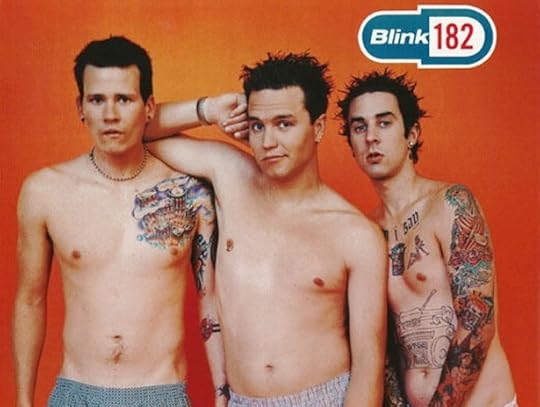
Vocab Lessons Through Song Lyrics
To arrive at this idea, scientists analyzed the lyrics to more than 15,000 songs in a karaoke database and found that 419 tracks include words like “rain,” “sun,” “thunder,” “heat,” and “frost.” Researchers also threw in another 340 songs based on other databases and their own memory, giving them a bigger sample from which to study how weather tends to function in songs. One finding: Climate words are generally associated with major keys, “sunshine” even more so, and “rainbows” even more again. The study’s authors also think it’s possible that specific weather events lead to weather songs; they say the 1950s and 1960s were a time of unusually severe atmospheric conditions in the U.S., and the music of the time reflects that. (Or maybe, the paper doesn’t consider, the early rock lyricists had yet to tire of rhyming “rain” with “pain.”)
According to the researchers’ data set—again, the entries in a karaoke book plus other songs that occurred to them (they’re still soliciting suggestions)—the songwriters most likely to reference weather are Bob Dylan, John Lennon, and Paul McCartney. Which is a bit surprising for anyone who think of those folks as some of the truest geniuses to ever sing over guitar. After all, art about the weather is broadly seen as cheapo, lazy, and intolerably sentimental. Paintings of sunsets, stories that open with “it was a dark and stormy night” (ahem), movie kisses in downpours—these aren’t just clichés, they’re clichés used to illustrate the concept of cliché.
For a defense of our rock gods, it might help to turn to the foundational critic of weather imagery in art, the 19th-century writer John Ruskin. In an 1856 essay, he coined the term “pathetic fallacy” for when authors act as though the natural world reflects or possesses human traits. “Nature must be gladsome when I was so happy” from Jane Eyre is an example of pathetic fallacy; so are the words to the song featured in the title of the Southampton study, the Cascades song “Rhythm of the Rain”:
Listen to the rhythm of the falling rain
Telling me just what a fool I've been
I wish that it would go and let me cry in vain
And let me be alone again
Despite the connotations of the words “pathetic” and “fallacy” today, Ruskin didn’t fully condemn writing like this. “If we think over our favorite poetry, we shall find it full of this kind of fallacy, and that we like it all the more for being so,” he said.
“It is only the basest writer who cannot speak of the sea without talking of ‘raging waves,’‘remorseless floods,’ ‘ravenous billows’, etc.”As Ruskin saw it, the fundamental difference between hackwork and brilliance was the sincerity, or perceived sincerity, of the person comparing the inanimate to the animate. Pathetic fallacy is fallacy because it’s false; when Alton Locke wrote that “They rowed her in across the rolling foam—The cruel, crawling foam,” he was incorrect to describe the foam as cruel or crawling. However, Ruskin argued, “The state of mind which attributes to it these characters of a living creature is one in which the reason is unhinged by grief.” Readers know that they are reading an untrue description, but they believe the narrator to be so overcome by emotion that he misperceives the foam to be cruel. Which actually makes the description wonderful, evocative, moving.
The terrible flipside of this was authors who defaulted to melodramatic personification just for the sake of it. “An inspired writer, in full impetuosity of passion, may speak wisely and truly of ‘raging waves of the sea, foaming out their own shame,’” Ruskin wrote. “But it is only the basest writer who cannot speak of the sea without talking of ‘raging waves,’ ‘remorseless floods,’ ‘ravenous billows,’ etc.” There are four classes of creator, he continued:
The men who feel nothing, and therefore see truly; the men who feel strongly, think weakly, and see untruly (second order of poets); the men who feel strongly, think strongly, and see truly (first order of poets); and the men who, strong as human creatures can be, are yet submitted to influences stronger than they, and see in a sort untruly, because what they see is inconceivably above them. This last is the usual condition of prophetic inspiration.
That second order of poets isn’t hard to find in music; Hilary Duff asking, “let the rain fall down / and wake my dreams” represents metaphor mixing from a cynical songwriting team, no matter how cathartic it sounds blaring from car speakers. But what about Ruskin’s mention of “prophetic inspiration”? I’d put some of the most famous weather songs in that category. Unlike with other forms of art with words, music can convince the audience they’re witnessing a genuine outpouring of feeling via pure sound.
I think of Bill Withers’s “Ain’t No Sunshine” as the ultimate case for pathetic fallacy in music; listening, you know, you know, you know that the singer really does feel as though the sunshine’s left along with his lover. Similarly, “Here Comes the Sun,” written by George Harrison after a long winter filled with dreary business wrangling for the Beatles, uses its instrumentation, melody, and words to communicate the universal—and essentially fallacious—feeling that the world’s happier when the clouds break.
The unsurprising truth is that weather as a lyrical topic can be as inane or as profound as any other. Bob Dylan, who’s referenced the subject in 163 out of his 542 songs, can pull off convincing, sky-related allegory as well as anyone—see “A Hard Rain’s A-Gonna Fall.” But his best weather lyrics are the ones that transcend the category altogether. “Blowin’ in the Wind,” is anything but pathetic fallacy; when he says the answers he seeks are in the wind, he’s speaking factually, or as factually as you can get when talking about the largest questions of human existence. And the ultimate lyric of the climate-obsessed song tradition might be in “Subterranean Homesick Blues,” which goes a long way toward explaining why so many people have participated in that tradition—“You don't need a weatherman to know which way the wind blows.”









Republican Defenders of the Confederate Flag Derail a Spending Bill
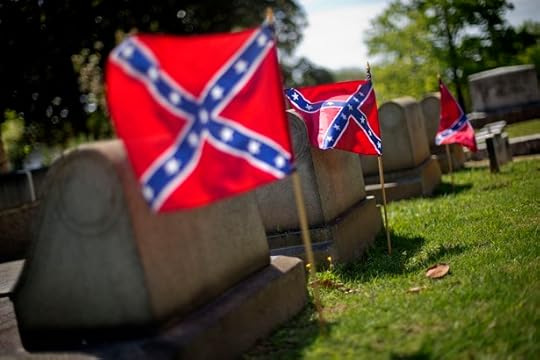
National Republican leaders have been eager to put the debate over the Confederate flag behind them. But on the same day that South Carolina finally voted it off its state capitol grounds, the flag somehow managed to bring down a $30 billion spending bill in Congress.
It’s hard to understand exactly how Republican leaders in the House allowed the divisive symbol to derail an appropriations bill for the EPA and the Department of the Interior, but by midday Thursday, they were forced to shelve a piece of legislation that just a day earlier had been set to pass—all because of the flag.
What happened is this: Seizing on the emotional debate playing out in states throughout the South, House Democrats on Wednesday offered amendments that would prohibit the use of public funds to display the Confederate flag on federal lands—specifically at cemeteries run by the National Parks Service. Hoping to avoid any kind of dispute surrounding the flag, GOP lawmakers in charge of the legislation adopted the amendments by voice vote.
But not all Republicans were happy that Democrats had slipped in language targeting the Confederate flag. According to reports in the Beltway press, some members from Southern states complained to party leaders, promising to oppose the appropriations bill if the amendments stayed in. With most Democrats balking at the funding cuts and restrictions the bill would impose on the EPA, the Republican leadership could not afford to lose any votes.
Late Wednesday night, Representative Ken Calvert of California, the chief GOP author of the appropriations bill, surprised Democrats by introducing an amendment, slated to be voted on Thursday, that appeared to undo the changes already added and restore the Confederate flag to national cemeteries. Democrats were aghast. According to Roll Call, Representative Betsy McCollum was “audibly shaken” as she rose to protest the move in a speech on the House floor. The chairman of the Congressional Black Caucus, G.K. Butterfield, took to the floor to express his “utter outrage”:
Don’t Republicans understand that the Confederate Battle Flag is an insult to 40 million African Americans and to many other fair-minded Americans?
By Thursday morning, Republican leaders decided that instead of risking a public debate over the flag, they would pull the entire spending bill from the floor. “This bill is going to sit in abeyance until we come to some resolution on this,” Speaker John Boehner told reporters at a press conference. While making clear he did not believe the Confederate flag should fly in federal cemeteries, he said he’d be forming a group of members that would look at the issue “in a responsible way.” Presumably, Boehner wants to find a way to simply remove the flag from federal areas, rather than allow Democrats to attach piecemeal provisions to other bills.
But Democrats were not having it. In the midst of unrelated votes later Thursday, Nancy Pelosi, the party leader, sought to force a vote on a resolution that would remove all flags that include the Confederate flag—such as the state flag of Mississippi—from display in the Capitol. Over the raucous objections of Democrats, Republicans voted to refer the resolution to committee, effectively tabling it. To protest, Democrats insisted on casting their votes manually, rather than using the now-traditional electronic method, slowing down the process.
Calvert, meanwhile, insisted on Thursday that the amendment was not his idea and that party leaders, under pressure from Southern Republicans, had put him up to it. In a lengthy statement, he said that existing Obama administration rules prohibited the sale and display of the Confederate flag, “except when displayed in a historical and educational context.” One of the Democratic amendments would have removed that exception, and the leadership amendment was meant “to clear up any confusion and maintain the Obama administration’s policies with respect to those historical and educational exceptions.” He said he regretted not consulting with Democrats “regarding this important and sensitive issue.”
“To be clear,” Calvert said in a part of his statement that was typed in bold, “I wholeheartedly support the Park Service’s prohibitions regarding the Confederate flag and the amendment did nothing to change these prohibitions.”
As the imbroglio unfolded in the U.S. Capitol, about 500 miles to the south, members of the South Carolina House of Representatives finally voted to remove the Confederate flag from the capitol grounds. At his press conference Thursday morning, Boehner said he scrapped the spending bill because he did not want the Confederate flag issue to become “a political football.” Judging by the theatrics in the House on Thursday, it might be a little late for that.









Rectify Is Still Television’s Quiet Triumph

No television product wants the title Rectify has now claimed for two years in a row: the best show nobody’s watching. Toiling away on the Sundance Channel, the Southern Gothic tale of a man freed from Death Row after 19 years has received the kind of rave reviews that keep a show on the air despite desperately low ratings, and it’s back for a third season Thursday night. Rectify is slow and often hypnotic, but its deliberate style is all in the service of great storytelling, trading wild twists and turns for quiet poeticism.
To be sure, Rectify has much that could help it break out along the lines of previous basic-cable shows that took years to find an audience. It’s critically championed, its entire run is available on Netflix, and it has a serialized narrative, with each episode usually only advancing the tale of the newly freed Daniel Holden (Aden Young) by a day or two. A show like AMC’s Breaking Bad followed a similar trajectory—released to strong reviews but low ratings, only later to draw viewers in who could binge-watch its early seasons online. But Breaking Bad’s serialization was outrageously breakneck and tense, laden with cliffhangers and Mexican standoffs—while Rectify charts a much more deliberate (but equally compelling) course.
Related Story
The Power of the Sundance Brand
Released after DNA evidence vacates the conviction that saw him sentenced to death 19 years prior, Daniel returns to his small Georgia hometown a free man, if not a truly exonerated one in the minds of his neighbors. Many still see him as guilty, even though it’s strongly implied that he was coerced into confessing to the murder of his girlfriend because he was only 18 years old and didn’t have a lawyer. The situation isn’t helped by his somewhat bizarre demeanor—Young has a large, hulking presence with a piercing gaze, and he plays Daniel as a gentle, bewildering giant, often staring blankly through social interactions or taking pleasure in tiny cultural oddities that have sprung up in his 19 years away from the rest of humanity. As Rectify’s story plays out, the audience remains unsure as to whether Daniel is truly guilty or not, and the show dwells on the uncertainty that’s splintering his family and friends who worked to get him out of jail.
There’s enough to the central plot to make for engrossing drama, but Rectify’s true power comes from the smaller character moments and its mesmerizing dialogue. The question of Daniel’s guilt is an interesting, but secondary concern—this is a show about the human condition, and how powerfully that can be rocked by a lifetime of solitary confinement. The show frequently flashes back to Daniel’s time on death row in a windowless cell, talking through the grates to his neighbors, and absorbing as much life as he can through reading books.
Despite its prison setting, the story never feels exploitative or brutally violent, unlike most premium cable dramas today, but it also doesn’t shy away from the mental and physical trauma of Daniel’s experience. Young conveys so much in a look that there’s rarely more exposition required to get the point. His family includes his fiery sister Amantha (Abigail Spencer), who’s robbed of purpose once her brother gets out of jail, and his mother, Janet (J. Smith-Cameron), whose delicate manner around her son suggests the deepest compassion.
Despite its prison setting, the story never feels exploitative or brutally violent, but it also doesn’t shy away from the mental and physical trauma of Daniel’s experience.There are also dark family secrets left untold, an ongoing effort by the former District Attorney who convicted Daniel to get him back in prison, and unresolved story threads about Daniel’s fellow high-school classmates who may have been the true perpetrators of the decades-old murder he was imprisoned for. Rectify’s creator, Ray McKinnon (a character actor best known for his turn as the Reverend Smith on Deadwood), stays true to the general conventions of TV storytelling while adding his own flair for weighty but natural-sounding dialogue, and creating an authentic Southern setting stripped of cheap stereotypes.
Whatever the ratings, Rectify’s future isn’t in doubt—it was already renewed for a fourth season, and Sundance is clearly betting on it as the cornerstone of its efforts to establish a premium-cable brand, as so many networks before have done. The series is vital and different enough to do so, but if its consolation prize remains the “best show that nobody’s watching” trophy for a third year running, that’s still a testament to an expanded television universe that allows such quiet gems room to breathe without needing to justify their existence to advertisers.









Is China's Financial Crisis Really Bigger Than Greece's?

Days since a referendum in Greece helped push the country closer to a painful exit from the eurozone, another financial crisis is competing for the world’s attention in China, where stock markets have tumbled in the last month.
“Instead of focusing on Athens, investors should be much more worried about what’s going on in China,” warned CNN Money. Writing in the Wall Street Journal, meanwhile, Ruchir Sharma of Morgan Stanley Investment Management wrote that “if ... the Chinese economy spirals downward, it will make the drama surrounding Greece feel like a sideshow.”
This point of view is naturally supported by a range of eye-popping numbers. Over a period of four weeks, Chinese companies lost some $3.9 trillion in value—a number more than 15 times the size of the entire Greek economy. The Chinese government has employed a range of strategies to halt the slide. Beijing relaxed restrictions on how much investors could borrow to buy stocks, and China’s largest brokerage firms announced a $19.4 billion plan to purchase shares in major companies. The government has restricted new company IPOs—lest they prevent investors from putting their money into companies already selling shares on the stock market—and have meanwhile suspended trading on thousands of other struggling firms. Most recently, China’s securities regulator announced that any shareholder owning stocks worth more than 5 percent of an individual company could not sell those stakes for the next six months. On Thursday, these measures temporarily seemed to work: The Shanghai Composite Index recovered 5.8 percent of its value, while another index, for the smaller stock exchange in the southern city of Shenzhen, jumped by 3.8 percent. Prior to that, each market had fallen over 30 percent since June 12.
The collapse is, to say the least, unnerving in a country of such tremendous size and influence. China has a population 1.3 billion people as well as the world’s second-largest economy, one that is deeply connected to world markets. Greece, by contrast, has a population around the size of Ohio’s and an even smaller economy. But dollar amounts lost only go so far as measures of the size of the crisis each country faces.
“The Chinese stock market got out ahead of where the economic fundamentals suggested it should be.”For one thing, China is still living on the largesse of a bull run that preceded June’s collapse. The Shanghai index is 74 percent higher than it was at this time last year, while Shenzhen is still up 84 percent. But that surge in stock prices did not accompany a jump in overall economic growth (which has slowed) or in corporate performance, which in China is difficult to ascertain given a lack of transparency or enforced accounting standards. The bull market instead was propelled in no small part by popular frenzy as small investors jumped into the fray with borrowed money. As Neil Irwin pointed out at The New York Times, while the downturn is certainly painful to those who lost money, it may be less a shock than a simple correction to the norm—just like China’s last equities plunge in 2007.
“The Chinese stock market got out ahead of where the economic fundamentals suggested it should be,” said Nick Consonery, a China expert at Eurasia Group, a political risk consultancy. “The best-case scenario for the government would be to align it more with the actual economy.”
In addition, the Chinese economy is more insulated from stock market fluctuations than those in developed countries like the United States. The stock market just isn’t a huge driver of economic activity in China: According to the Economist, less than 15 percent of overall household assets are invested in it. The country’s national savings rate remains extremely high, protecting it from a U.S.-like debt crisis, and the government could still encourage more investment by lowering interest rates.
The real problem with China’s stock-market fluctuation isn’t that it’ll plunge China into a depression. It’s that it interrupts the country’s long-term economic strategy. “The Xi administration wanted the equity markets to be a meaningful channel for Chinese companies,” said Consonery of the government under Xi Jinping, who has led the country since 2013. “They didn’t want them to rely too much on bank loans, and they wanted them to use the stock market to accrue money.”
Given the government panic spurred by this summer’s correction, though, the country’s biggest companies may well lose faith in the long-term health of Chinese equity markets—and that could cause serious problems in the future. But for now, it’s premature to worry that the Chinese stock fluctuation will cause significant damage to China, much less the global economy as a whole. And that means that the world’s pessimists should still keep their focus on Greece.









Republicans Try to Cancel the Donald Trump Show
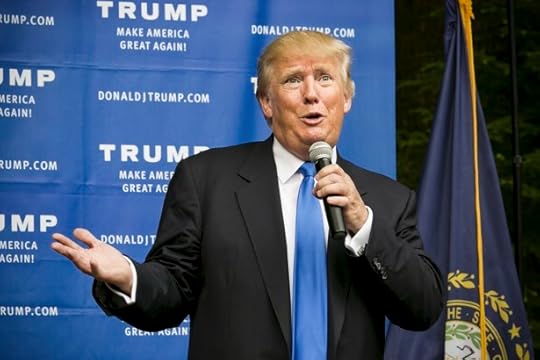
Updated on July 9, 2015 at 1:50 p.m.
It was fun while it lasted, but Republicans aren’t laughing at Donald Trump anymore. Donors are alarmed and talking about how to bar him from debates. Other GOP presidential candidates are attacking him openly. Even Reince Priebus, the chair of the Republican National Committee, called Trump Wednesday.
But the way that call went down shows just how difficult a challenge it is to keep a lid on Trump. The Washington Post reported on the call Thursday morning, saying Priebus “spent nearly an hour Wednesday on the phone with Donald Trump, urging the presidential candidate to tone down his inflammatory comments about immigration that have infuriated a key election constituency.” Priebus relayed the details of that call to GOP consultants and donors, apparently to calm their nerves.
Then Trump offered his own account of the call. It was a little different:
Donald J. Trump insisted on Thursday that his phone call with Reince Priebus, the chairman of the Republican National Committee, was brief and described it as “congratulatory” instead of condemnatory, in contrast to news accounts of the talk.
“This is shocking,” [said] Mr. Trump, the real estate mogul who is now running for president as a Republican, of descriptions of his conversation with Mr. Priebus on Wednesday that portrayed it as lasting nearly an hour.
Just for good measure, Trump tossed in that Priebus “knew better than to lecture” him.
Clearly, Trump isn’t planning to slink quietly away. And in fact, receiving a call like this from Reince Priebus is exactly what he wants, since it places him front and center and seems to legitimate his place in the Republican firmament. The problem facing Priebus and Co. is that none of the standard tricks a party might have to sideline a candidate are likely to work on Trump.
There are several important caveats here. First, as Mike Allen wryly noted, Republican edginess about Trump isn’t new—though it does seem to be reaching a new pitch. Second, Donald Trump will never be president, for reasons Harry Enten explains at FiveThirtyEight. Third, not all conservative movers and shakers are nervous; Bill Kristol is out there saying his presence is good for the field. Fourth, there’s reason to think that Trump’s numbers will only slide from here.
For the time being, however, he’s easily within the top-10 cutoff for the first GOP debate in August, and he’s even leading in North Carolina in one poll.
Related Story
The 2016 U.S. Presidential Race: A Cheat Sheet
How does a party tie down a loose cannon? One method is money. But Trump—even if his own estimates of his wealth are wildly inflated—doesn’t need to worry about donors. His millions allow him to self-fund his campaign, and so he can’t be pressured by big donors.
Moreover, Trump isn’t really a Republican in any meaningful way. Sure, he’s registered as one, and some of his opinions overlap with much of the Republican base. But others don’t. He’s been, at various times, a Democrat and an independent, he’s given to Democratic candidates including Hillary Clinton, and he’s even said he’s pro-choice and favors universal health care. (A true cynic might suggest that Trump is politically incoherent and is just running for office for the attention.) Traditional politicians are beholden to a party apparatus and to mentors and friends and colleagues in their party, but with no such ties, Trump is immune to those pressures.
Republicans could also try to keep him off the debate stage, as donor John Jordan proposed, but it’s hard to see what mechanism they might employ. When Fox and CNN set up their debates, with the party’s blessing, they instituted new rules: only 10 candidates, determined by who was polling near the top nationally. In theory, those rules were intended to keep the debates to a manageable size, block out oddball and vanity candidates, and make sure that the Republican Party writ large—rather than just voters in Iowa or New Hampshire, or some subjective and easily criticized group of experts—had a say. In practice, they seem to have cleared the way for Trump’s participation, while threatening to keep out more-established candidates, like Ohio Governor John Kasich, who aren’t polling as well. One potential hangup is that candidates for the Fox News debate are required to have filed financial disclosures. Trump says he’ll do so, but many journalists (this one included) have been skeptical that Trump will be willingly to publicly reveal his true net worth, a subject of frequent debate and litigation.
The biggest problem, however, is media—and specifically, what’s known as “earned media,” publicity garnered in the media without paying. If there’s one thing Trump is good at it, it’s earning media. Think about it this way: Running for president today is a lot like being a reality-TV star. You’ve got to give people the impression that you’re spilling intimate thoughts, always be ready with a buzzy quote, and put yourself in front of a camera as often as possible. Trump has a huge jump on the rest of the presidential field because he already is a reality-TV star.
In the 2012 cycle, Herman Cain got a lot of attention for a short period of time, and briefly led polls. His campaign ultimately fell apart because of the discovery of old sexual-harassment claims and infidelities. Once it became clear Cain was on his way out, the press turned away and he quickly disappeared. Trump’s media arc is unlikely to go the same way. Everyone already knows about his outrageous personality, and he’s famous outside of politics. Plus, he’s willing to talk to reporters all the time. As Dylan Byers reports, the media (and especially TV) love Trump. Trump gave yet another wild, freewheeling interview to the Post Thursday, after making news with NBC on Wednesday. The result is that the Republican Party can’t just sit back and wait for Trump to burn out.
The best news for Priebus is that the very volatility that’s made Trump a star could be his undoing, too. His run has already been very bad for his business empire, and maybe he’ll stop. Or perhaps he’ll say something so outrageous that it finishes him—though at this point it’s tough to imagine what that would be, given that his comments about Mexicans and his resuscitation of birtherism haven’t yet derailed his candidacy. Meanwhile, a campaign that looks like a joke has the potential to materially affect the policy debate in the GOP primary. Priebus has to hope he can find some creative way to fire this celebrity apprentice-politician sooner rather than later.









Atlantic Monthly Contributors's Blog
- Atlantic Monthly Contributors's profile
- 1 follower



